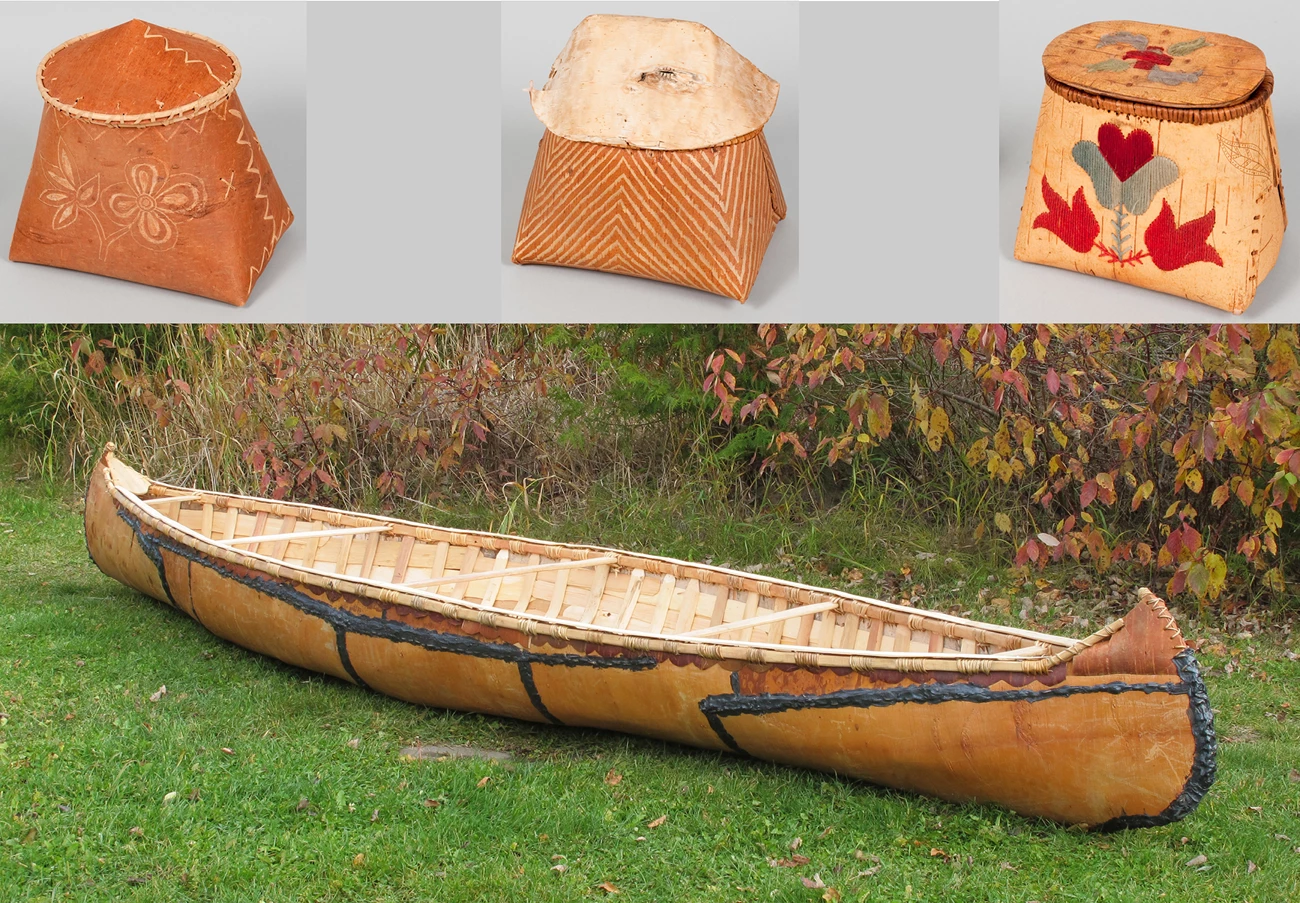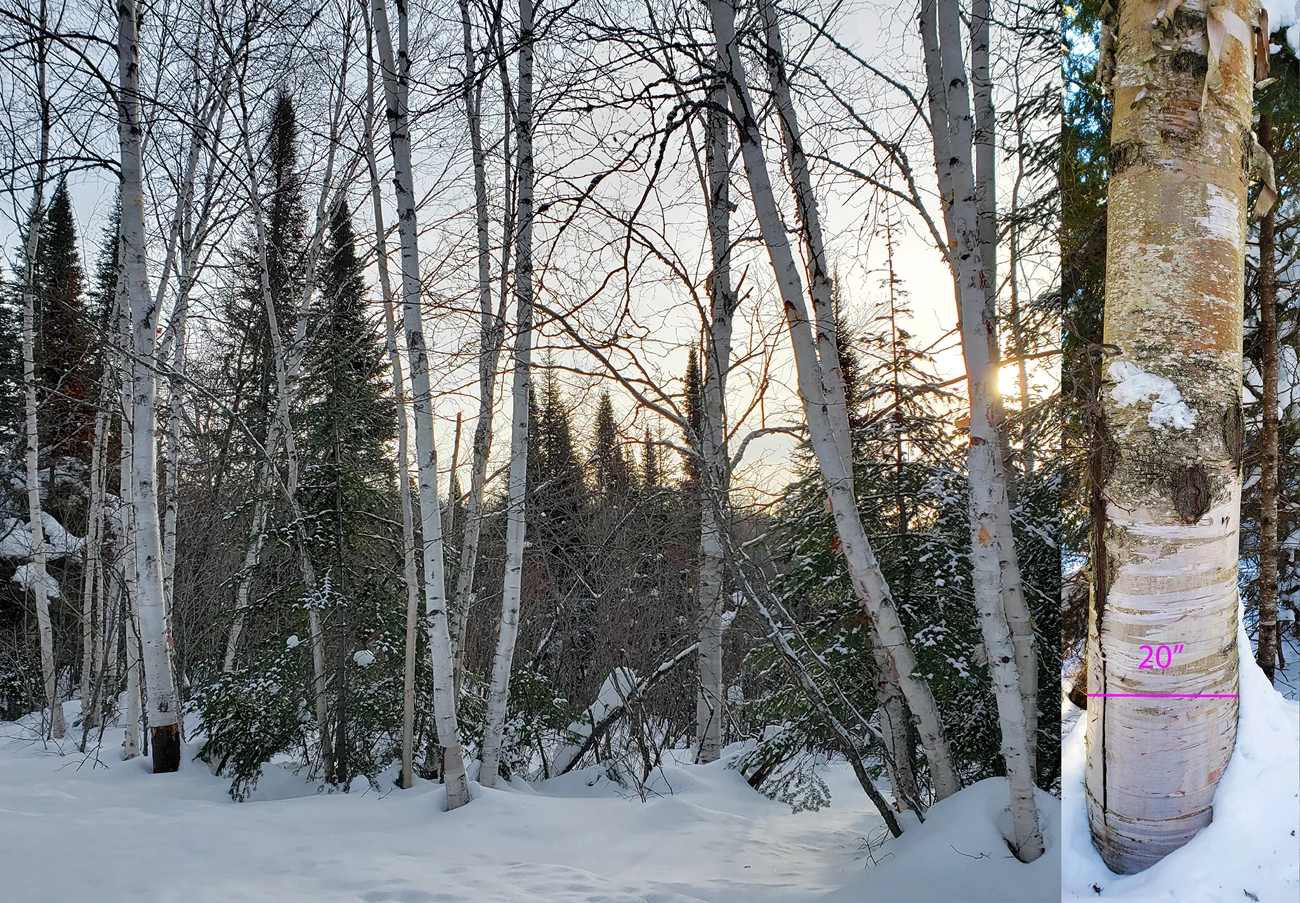|
Traditional Plant Use 

Left image
Right image

NPS Photo / P. Brown A Forest of FoodNorthern forests provide an abundant supply of raw materials for the people who live within them. Essentials like snowshoes, toboggans, wigwams, and canoes originate in this vast ecosystem and are all made from boreal forest trees. The birchbark canoe is one example. The frame is cedar overlaid with sheets of waterproof birchbark, sewn together with spruce root, and sealed with a mixture of pine pitch, bear grease, and soot. Wiigwaas (birchbark) strips off easily at certain times of year, and thick enough so that a layer remains to serve the tree. This useful material bends easily into makuks (containers) to hold water and maple sugar, or to cook and prepare food as in vessels for winnowing manoomin (wild rice), and many other jobs. Who needs to grow a garden if you know where the plants grow? Traditionally, Anishinaabe followed food sources. At the end of winter, to the sugarbush for boiling maple sap into sugar. This in-between season when nights freeze and daytime temperature rise enough for the sap to run brings all ages together for this task. At the end of summer to the inland lakes to harvest manoomin (wild rice). Summer months are filled with a variety of edible fruit such as strawberries, blueberries, raspberries, juneberries, and thimbleberries, and edible plants like ramps and ferns, as well as edible fungi.* Reintroduced strategic burns keep blueberry patches free of other plants, a technique used for hundreds, if not thousands, of years. * Harvesting a small amount for day use is allowed while hiking at Grand Portage National Monument. Make sure to bring someone who can make a definite identification as many forest plants can be toxic. Gichi-onigamiing Mitigoog (Trees of Grand Portage)Ojibwe (Anishinaabe) names for plants, animals, and parts of the earth are very descriptive and often vary across communities. In some instances, there is a base name that is common and depending on the circumstance a speaker will add a bit more about the color, size, or actions that are observed. Hear Anishinaabe (Ojibwe) tree names spoken. Anishinaabe & Scientific Names of Common Plants
Select a Park:Select a Species Category (optional):
Search results will be displayed here.

NPS graphic using ESRI geospatial data Boreal ForestGrand Portage National Monument preserves an important component of the largest terrestrial ecosystem in the world, the boreal forest. This forest encircles the earth below the polar tundra and above the hardwood forests. The primary factor in determining the position of boreal forest on the globe is climate. Did you know that the growing season is so short here, that wetland species such as speckled alder and black spruce may grow in many upland places? Having wetland species like alder, dogwood, and black spruce in the uplands makes this area unique. Shaped by glacial and post-glacial events and home to strong seasonal variation, the boreal forest remains one of the most intact ecosystems on Earth. Referred to as the Lungs of the World, it comprises more than 30% of the earth's forests and contains a significant amount of its surface freshwater.Boreal Forest & Ecology Research |
Last updated: June 26, 2025
